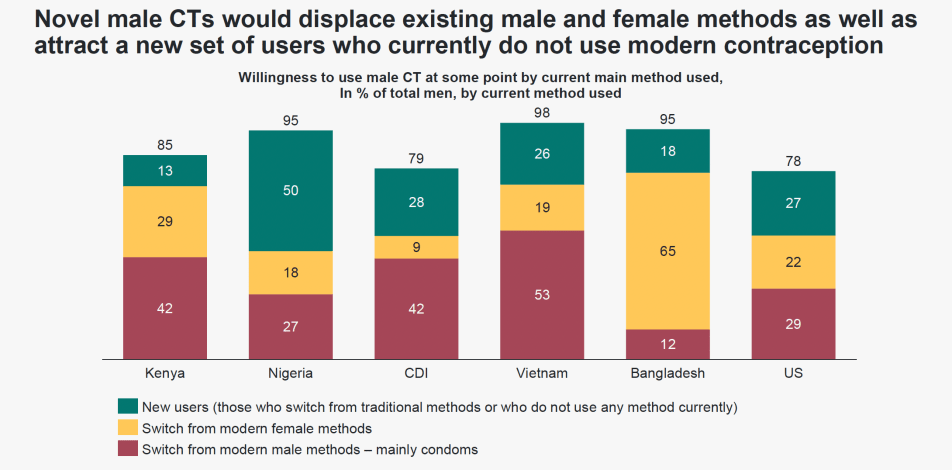
Birth control has traditionally fallen to women, but researchers say a new temporary and “on demand” male contraceptive pill could turn the tables on safe sex.
The research, published today in the journal Nature Communications, shows it’s possible to turn active sperm off during sex and back on again afterwards. It’s an on-off-on switch much like Viagra’s off-on-off function, said professor of pharmacology Dr Lonny Levin, co-director of the Weill Cornell Medicine laboratory running the research.
“It proves the principle that we can have a man take a pill, wait half an hour, be contracepted for the next few hours, and then be totally normal the next day,” he told Crikey.
Most male contraceptive pill research has tried to replicate a female model: hit the hormones, cap production, and keep it constant with long-term dosing. For men, this has put the focus on reducing overall sperm count to a level of infertility. Although hormone-centric male contraception has overall done well in clinical trials (an approximate 94% success rate), “unwanted side effects” stymied uptake.
The alternative, said Levin, was to go non-hormonal and take on sperm in a post-production capacity. Not so easy when men can produce almost 1000 sperm a second. Scale up to the point of ejaculation and that’s an army in the hundreds of millions.
From a research perspective, Levin said the idea of stopping a tidal wave of mature-aged swimming sperm has been “scary” and “insurmountable”, but in reality deactivation is a far simpler, faster and safer fix than depletion.
How does it work?
In short: man takes drug, drug attaches to sperm, 30 minutes later sperm begins beauty sleep, sperm naps, then post-sex sperm wakes after the baby-making window of opportunity has closed. Contraception 101.
Levin’s contraceptive compound (it graduates to the title of “drug” once approved for use) has been tried and tested exclusively on mice, primarily using injection. To obtain drug status, the contraceptive must go through larger animal trials (rabbits next up) followed by a series of in-man trials that range from test-tube ejaculate to “real mating”. It’s a six-to-eight-year timeline (two to three years for in-man trials to commence), but Levin said efficacy indicators were already up.
“When we injected it into the male mouse, the sperm didn’t swim. Right away, we had an indication it was going to work,” he said.
Levin’s colleague and lead researcher Dr Melanie Balbach said a key challenge for the contraceptive compound was whether it would work in a female who receives the sperm but does not have the sperm sleep-inducing compound in her system.
In earlier iterations of the trial, the compound would detach from the sperm the moment it entered the female, but Balbach said her team had identified a “magic sauce” that was “sticky enough” to endure the journey from a contracepted male to a non-contracepted female.
The next step is to develop a female equivalent drug that does the same thing. Balbach said blocking ovulation with a 30-minute lead time is difficult because of the “complex mix of hormone levels” in women. The alternative is to set up a sperm watch (and act) system, meaning the drug latches on to any sperm that comes through the front door. In short: “Stop sperm dead in their tracks.”
“You’re giving one compound to a male that prevents the light switch going on. And a different compound to a female that could do the same when those sperm enter her,” she said.
What the men want
Despite resistance to the hormone edition of male contraceptive drugs, there is an appetite among men globally for their own version of a miracle pill.
Research conducted by development consultancy agency DesireLine (backed by the Bill & Melinda Gates Foundation and the Male Contraceptive Initiative) surveyed 2000 men plus female partners between the age of 18 and 60 across seven low- and middle-income countries, and 3000 men (plus female partners) in the US to gauge male interest in male contraception, style preference, whether women would warm to it, and whether it would change male and female attitudes to condom use.
In the US, 78% of respondents were pro male contraception, compared with countries such as Vietnam and Nigeria, which registered 98% and 95%, respectively. In Nigeria, 50% of yes voters were “new users” of modern contraception.

DesireLine’s founder and executive director Stephen Kretschmer was optimistic about the development of on-demand male contraceptives, telling Crikey that uptake in the US could triple the number of men who took to Viagra when it first hit the market.








Ladies, please raise your hand if you’re prepared to trust a bloke who tells you he’s taken his pill.
“male contraceptive pill could turn the tables on safe sex”
Safe sex is about more than preventing pregnancy
6 – 8 years for perhaps human trial results?
Poor animals being tested/dieing from the tests.
Plus from what I recall in my youth – how many males want to wait 30 minutes before sex?
Not a useful article – too many unknown medical variables.
Plus isn’t there a problem with low potency sperm?
And what woman would trust a bloke… any bloke, to take responsibility for birth control?
And what bloke would trust a woman… any woman, to take responsibility for birth control?
I don’t think men want unwanted children. If i was a self-interested man, I would want to put contraception control in my own hands so I don’t have to worry about a woman trying to baby trap me in a bad relationship or get pregnant and decide to not go through with an abortion because, understandably, it’s not an easy thing to have an abortion when your body is changing.
What man wants to get women pregnant then run from public view trying to dodge the law to avoid child support? I thought the mother only has to name the father on the birth certificate to get child support in NSW.